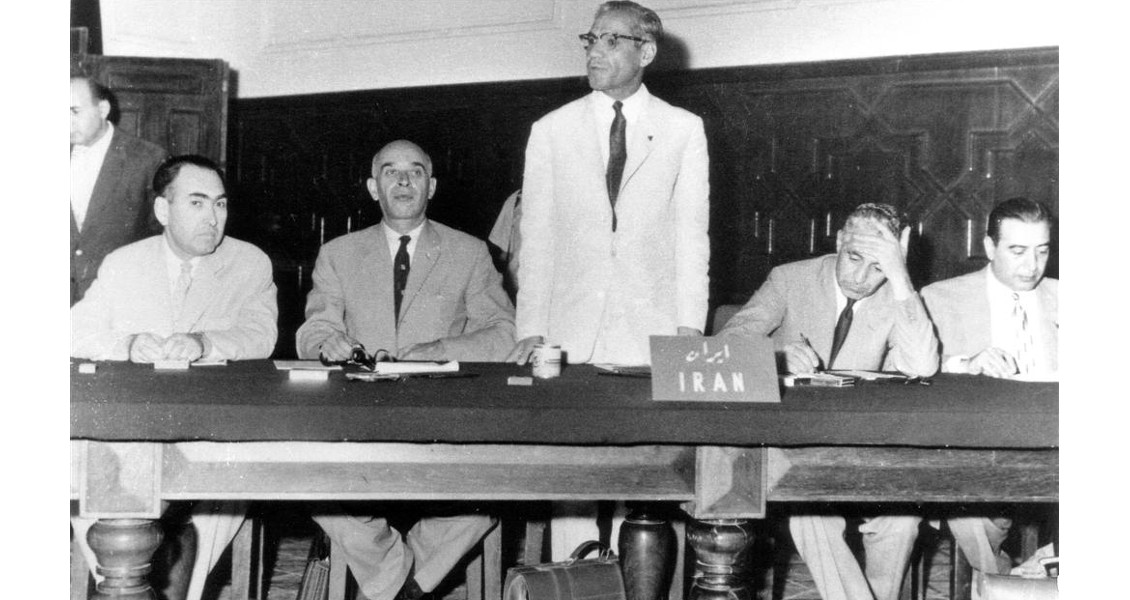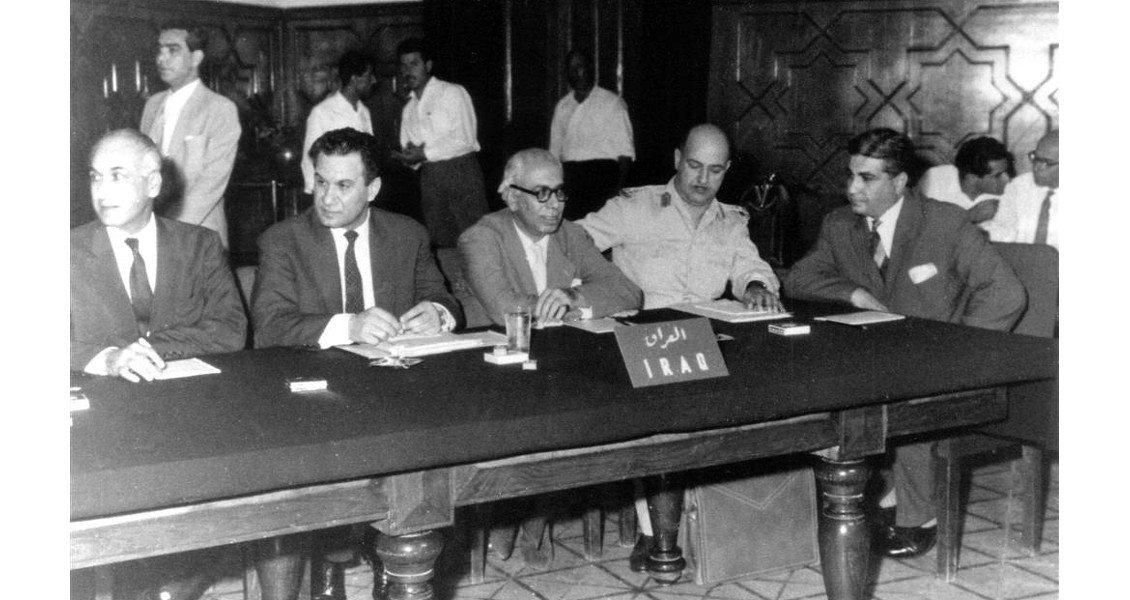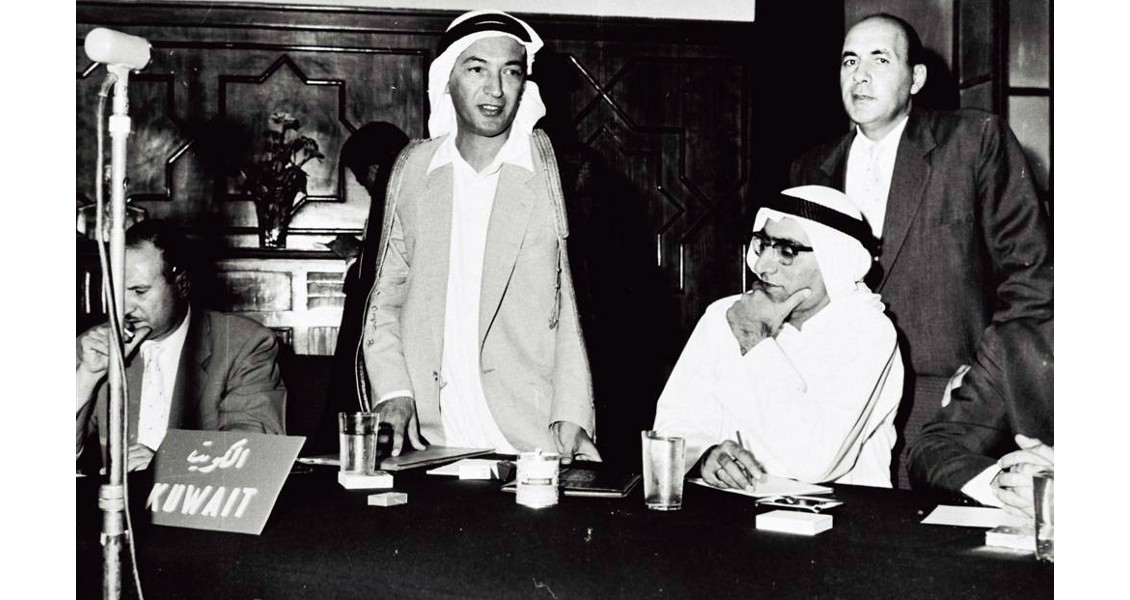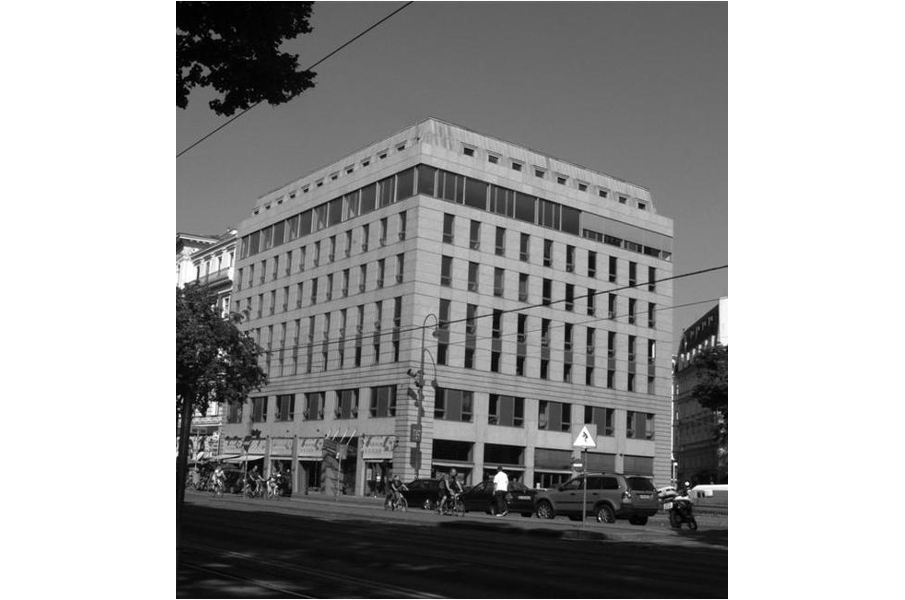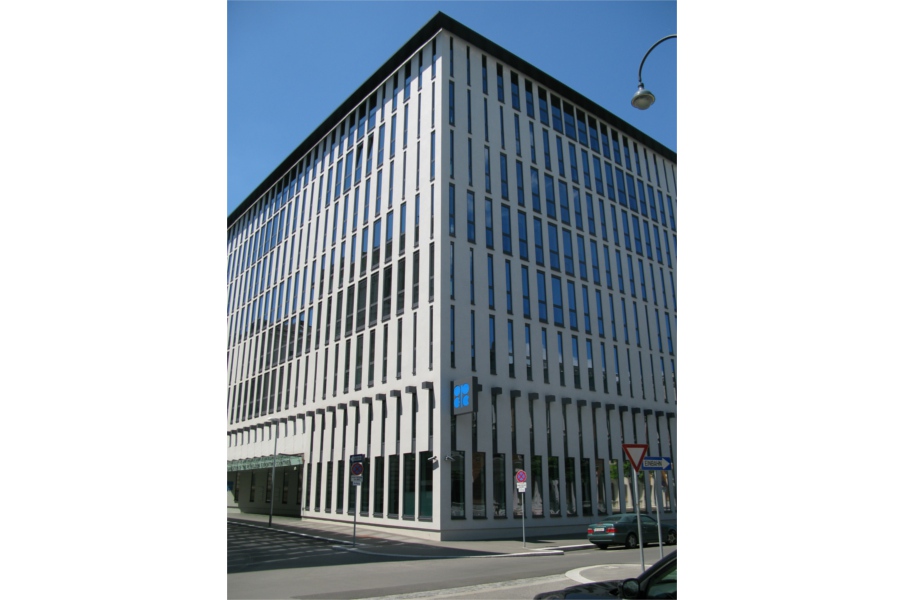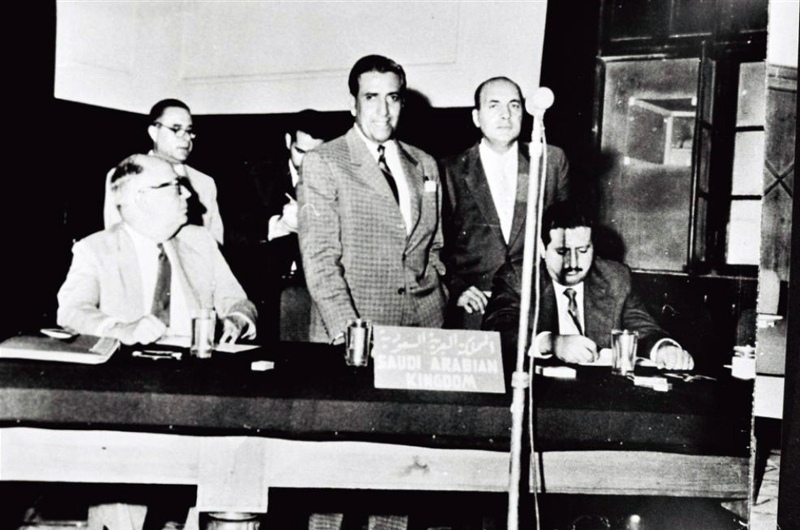 The meeting in Baghdad in September 1960 that led to the formation of OPEC by five founding countries: Saudi Arabia, Venezuela, Iraq, Iran and Kuwait. (Photo: OPEC)On 14 September 1960 five oil producing countries gathered in Baghdad to form an organization dedicated to:
The meeting in Baghdad in September 1960 that led to the formation of OPEC by five founding countries: Saudi Arabia, Venezuela, Iraq, Iran and Kuwait. (Photo: OPEC)On 14 September 1960 five oil producing countries gathered in Baghdad to form an organization dedicated to:
“the coordination and unification of the petroleum policies of the member countries and the determination of the best means of safeguarding their interests, individually and collectively.”
As oil consuming nations in the West, we may resent the Organization of Petroleum Exporting Countries (OPEC), today comprising 12 countries, as an oil cartel dominating the economy of a vital commodity in the world. Nevertheless, its formation was a reaction to certain historical vicissitudes, economic factors, and the geopolitical situation of the early to mid-twentieth century.
The Seven Sisters
The abundant oil resources of the Middle East, North Africa, South East Asia, and South America were developed by Western companies during an era when these regions were largely weak, under colonial powers or corrupt dictators, and little aware of the oil economy. Moreover, in the mid-twentieth century the world’s oil resources were largely dominated by a group of big Anglo-American companies which were dubbed by the Italian oil diplomat Enrico Mattei as ‘Sette Sorrellle’ (Seven Sisters). These included Standard Oil of New Jersey (Esso, later Exxon), Standard Oil Company of New York (Socony, later Mobil), Standard Oil of California (Socal, later Chevron), Gulf Oil, Texaco, Royal Dutch Shell, and British Petroleum (formerly the Anglo-Iranian Oil Company, AIOC). To these, one may as well add Compagnie Française de Petroles.
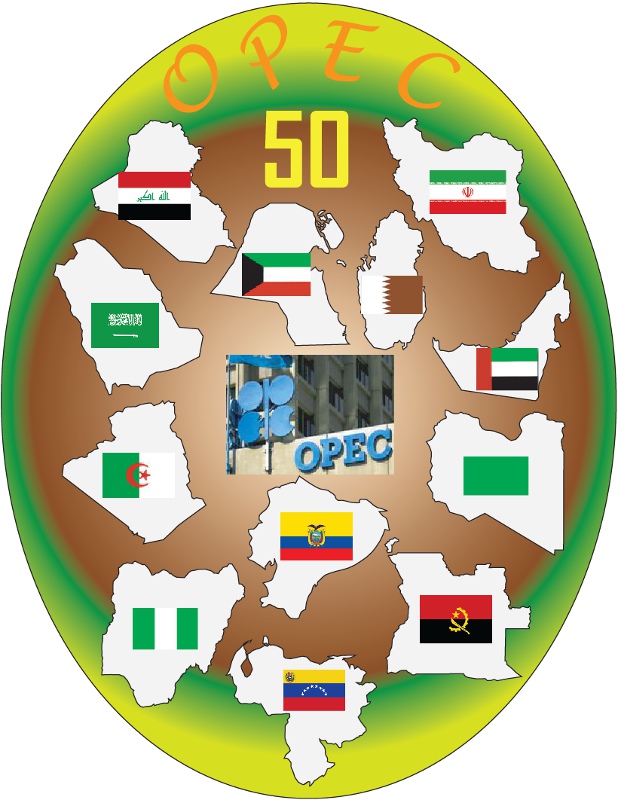 In 2010 OPEC celebrates its 50th anniversary. (Image: Setsuko Yoshida)Consortia from combinations of these companies owned large oil concessions in the Third World and thus controlled the exploration, production, distribution and sale of oil in the non-Communist countries. They were linked in an informal oligopoly as Anthony Sampson has described in his 1975 book ‘The Seven Sisters’. Indeed, in 1928 a secret deal called the Achnacarry (As-Is) Agreement (signed in Achnacarry Castle, Scotland) was reached between BP (Anglo-Persian), Shell, and Exxon (Esso) to set oil production quotas, reduce competition, and control oil prices. A 1952 report by the US Federal Trade Commission revealed this deal and referred to it as the International Petroleum Cartel.
In 2010 OPEC celebrates its 50th anniversary. (Image: Setsuko Yoshida)Consortia from combinations of these companies owned large oil concessions in the Third World and thus controlled the exploration, production, distribution and sale of oil in the non-Communist countries. They were linked in an informal oligopoly as Anthony Sampson has described in his 1975 book ‘The Seven Sisters’. Indeed, in 1928 a secret deal called the Achnacarry (As-Is) Agreement (signed in Achnacarry Castle, Scotland) was reached between BP (Anglo-Persian), Shell, and Exxon (Esso) to set oil production quotas, reduce competition, and control oil prices. A 1952 report by the US Federal Trade Commission revealed this deal and referred to it as the International Petroleum Cartel.
As nationalistic sentiments, political power, and modern education grew in the Third World’s oil rich countries, especially after World War II, these nations desired more control over and more profits from their oil resources. Against this backdrop, what specifically motivated the OPEC members to unite in the late 1950’s was a series of cuts in oil prices by the Seven Sisters, which adversely affected the national revenues of oil-producing governments. Two men, Pérez Alfonzo of Venezuela and Abdullah Tariki of Saudi Arabia, were especially instrumental in the formation of OPEC. In the words of one oil historian:
“Alfonzo provided the rationalization; Tariki, a charismatic speaker, the fire.”
Pérez Alfonzo
 Juan Pablo Pérez Alfonzo (1903-1979) was a Venezuelan oil diplomat and one of the founders of OPEC. (Photo: Wikipedia)Juan Pablo Pérez Alfonzo was born to a wealthy family in Caracas in 1903. At the University of Caracas he participated in the students’ movement against the long dictatorship of General Juan Vicente Gómez. He graduated in law, and after Gómez’s death was actively involved in politics, and in 1945, in the first democratic government in Venezuela, was appointed Minster of Development, also overseeing Venezuela’s oil industry. While in power, Alfonzo introduced a tax on oil that ensured that Venezuela would receive 50% of oil profits from the companies operating in the country. In 1948, a military coup overthrew the government and sent Alfonzo to prison. Upon release, he went into exile from 1948 through 1958, first in the USA and then in Mexico.
Juan Pablo Pérez Alfonzo (1903-1979) was a Venezuelan oil diplomat and one of the founders of OPEC. (Photo: Wikipedia)Juan Pablo Pérez Alfonzo was born to a wealthy family in Caracas in 1903. At the University of Caracas he participated in the students’ movement against the long dictatorship of General Juan Vicente Gómez. He graduated in law, and after Gómez’s death was actively involved in politics, and in 1945, in the first democratic government in Venezuela, was appointed Minster of Development, also overseeing Venezuela’s oil industry. While in power, Alfonzo introduced a tax on oil that ensured that Venezuela would receive 50% of oil profits from the companies operating in the country. In 1948, a military coup overthrew the government and sent Alfonzo to prison. Upon release, he went into exile from 1948 through 1958, first in the USA and then in Mexico.
While living in Washington D.C., Alfonzo carefully studied the global oil industry, and the case of the Railroad Commission of Texas (RCT) especially caught his attention. RCT was a government agency founded in 1891 to regulate the oil industry’s activities and public safety. After the discovery of the East Texas oil field in 1930, oil production suddenly increased while the world economy went into recession, causing huge reductions in oil prices (as low as ten cents a barrel) and threatening the functioning of the US oil industry. At this critical moment, RCT stepped in to limit oil production and stabilize its price. Alfonzo thought that an international agency similar to RCT would safeguard oil prices and the interests of oil producing nations – the germinal idea for OPEC. He believed that oil was too precious to be sold cheaply because the exhaustion of this non-renewable resource was bad for both consumers and the oil industry.
In January 1958, Venezuela’s military dictator Pérez Jimenez was toppled in a revolution, which brought to power, a year later, the democratic government of Romulo Betancourt. Alfonzo returned to his Caracas and was appointed the Minister of Mines and Hydrocarbons.
Abdullah Tariki
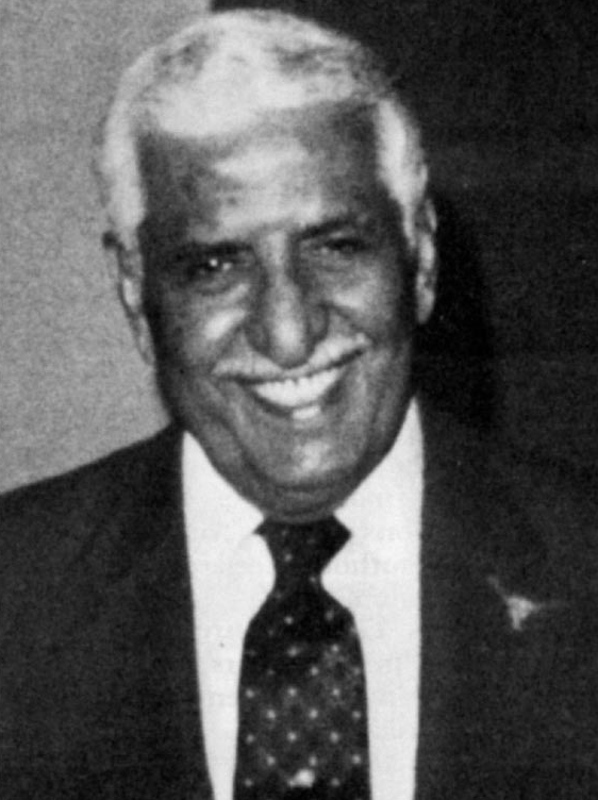 A petroleum geologist and diplomat from Saudi Arabia, Sheikh Abdullah Tariki (1918-1997) was one of the founders of OPEC. (Photo: The University of Texas at Austin)Shaikh Abduallah ibn Hamoud al-Tariki was born in Al-Zulfi, Saudi Arabia. His father organized camel caravans between Saudi Arabia and Kuwait. Tariki was educated in Kuwait and then studied science at the University of Cairo. After graduation in 1945, he spent two further years at the University of Texas obtaining a master’s degree in petroleum geology. He married an American and returned to Saudi Arabia in 1948 to take a position in the foreign ministry.
A petroleum geologist and diplomat from Saudi Arabia, Sheikh Abdullah Tariki (1918-1997) was one of the founders of OPEC. (Photo: The University of Texas at Austin)Shaikh Abduallah ibn Hamoud al-Tariki was born in Al-Zulfi, Saudi Arabia. His father organized camel caravans between Saudi Arabia and Kuwait. Tariki was educated in Kuwait and then studied science at the University of Cairo. After graduation in 1945, he spent two further years at the University of Texas obtaining a master’s degree in petroleum geology. He married an American and returned to Saudi Arabia in 1948 to take a position in the foreign ministry.
Politically, Tariki resented the West’s colonial policies in the Arab countries and was sympathetic to the Pan-Arabism of Gamal Abdel Nasser, who led the Egyptian revolution in 1952. In 1953, Abudl Aziz Al-Saud, the founder of Saudi Arabia, died and his son Saud succeeded him. Tariki was appointed Director General of Petroleum and Mineral Affairs in 1954, in which job he analyzed the country’s oil data provided by Aramco (Arabian-American Oil Company, a consortium of several US oil companies operating in Saudi Arabia). When the Saudi Ministry of Petroleum and Mineral Resources was established in 1960, Tariki was appointed its first minister. He was in power until 1962 when the court rivalry between King Saud and his brother Crown Prince Faisal ended in the victory of the latter, and Tariki, who had sided with King Saud, left the country and spent the rest of his life abroad working as a consultant and writer on oil matters. He died in Cairo in 1997 at age 80. After he left, Tariki was succeeded by Shaikh Ahmad Zaki Yamani as the oil minister, another charismatic figure, but unlike Tariki, a pro-Western one.
The Middle East in the 1950’s
Several political developments in the 1950’s encouraged the Middle Eastern countries to push for political gains. Overall, the decade witnessed the shaping of the cold war between the USA and the Soviet Union, and the weakening of British and French colonial powers in Africa and Asia. The political success of Gamal Abdel Nasser in nationalization of the Suez Canal in 1956 (with support from the United Nations Organization), despite the British-French-Israeli military intervention, sent waves of anti-colonial feelings across the Arab world. In July 1958, the British-supported Hashemite monarchy in Iraq was overthrown by a group of army officers; this brought the leftist Baath Party and a new era of dictatorship to Iraq. The new Iraqi administration demanded participation in the Iraq Petroleum Company (a Western oil consortium dating back to 1927), but was not accepted, which only added bitterness to relations between Iraq and the consortium.
Apart from political changes, the Seven Sisters in the Middle East were also threatened by competing oil companies, especially after the Suez Canal episode. Notable among them was Italy’s ENI led by Enrico Mattei who struck an unprecedented profit sharing deal in 1957 with the Shah of Iran, with 75% of the share belonging to Iran. Although the exploration block ENI was operating in did not yield commercial amounts of oil, this deal posed a potential danger to the Seven Sisters.
The Japanese oil companies, which like the Italians had been kept out of the Seven Sisters’ oil empire, also entered the Middle East: A Japanese consortium, Arabian Oil, signed separate deals in 1957 with Saudi Arabia and Kuwait to explore the Neutral Zone between these two countries; the agreement gave over 50% of the profits to Saudi and Kuwait. Arabian Oil began drilling offshore the Persian Gulf in July 1959 and discovered oil in January 1960.
Price Reductions and Reactions
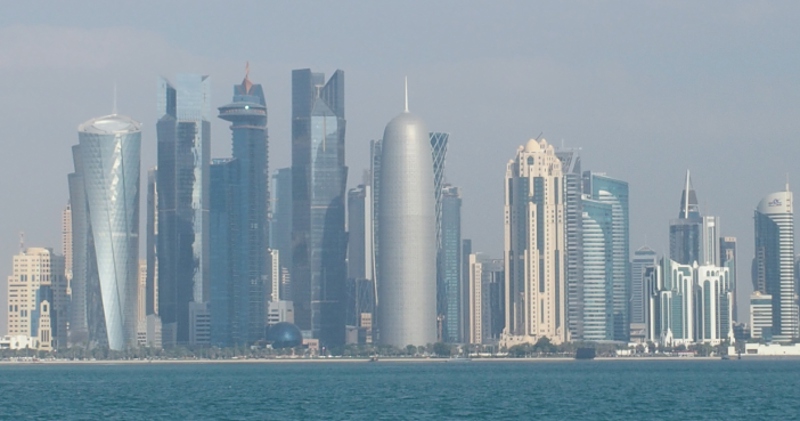 Modern day Qatar skyline. (Source: Phil Magor)Oil exporting governments were, as they still are, heavily dependent upon revenues from oil taxes and royalties, and planned their annual budgets accordingly. To help design a constant oil price system for these governments, the companies adopted “posted” or official oil prices for various oil grades. Although these prices were lower compared to the price of similar oil produced in the USA, the posted price system was widely adopted. As long as there was little difference between “posted” and marketed (“realized”) oil prices, the system functioned smoothly. But in 1955, the Soviet Union began to export oil and within three years Russian oil flooded the European and Asian markets. Meanwhile, oil production in the Middle East was also increasing each year. The oversupply of oil caused the Seven Sisters to give discounts on their oil prices; and they also felt that the “posted prices” should be reduced as well. Of course, the discounts the companies gave usually went to their own downstream affiliate companies, so in the end, the oil-producing countries suffered more.
Modern day Qatar skyline. (Source: Phil Magor)Oil exporting governments were, as they still are, heavily dependent upon revenues from oil taxes and royalties, and planned their annual budgets accordingly. To help design a constant oil price system for these governments, the companies adopted “posted” or official oil prices for various oil grades. Although these prices were lower compared to the price of similar oil produced in the USA, the posted price system was widely adopted. As long as there was little difference between “posted” and marketed (“realized”) oil prices, the system functioned smoothly. But in 1955, the Soviet Union began to export oil and within three years Russian oil flooded the European and Asian markets. Meanwhile, oil production in the Middle East was also increasing each year. The oversupply of oil caused the Seven Sisters to give discounts on their oil prices; and they also felt that the “posted prices” should be reduced as well. Of course, the discounts the companies gave usually went to their own downstream affiliate companies, so in the end, the oil-producing countries suffered more.
In February 1959, the companies, led by BP, unilaterally cut their posted prices by 10%. The price of Saudi Arabian light crude was reduced by 18 cents per barrel, leaving it at $1.90/b. Venezuelan oil’s price was reduced by 5 cents, and a month later 24 cents a barrel, leaving it at $2.80/b. Both Venezuela and Saudi Arabia were furious. Meanwhile, President Eisenhower’s administration had put quotas on imported foreign oil in order to protect the US domestic oil producers, a policy which particularly hit Venezuela as 40% of its exports went to the United States.
As it happened, an Arab Petroleum Congress was to be held in Cairo in April 1959. This Congress symbolized the ascending popularity of Nasser in the Arab world, although the rival Iraqi leadership boycotted it. The Cairo Congress issued a resolution calling on the oil companies to consult with oil producing countries and not to take unilateral decisions on oil price cuts. Another development during this Congress was Alfonzo’s meeting with Tariki. Alfonzo saw the Cairo gathering as a great opportunity to propose a united oil club with the Middle Eastern countries. He had thus led a delegation as an “observer” to Cairo carrying with them Arabic translations of Venezuela’s oil documents. Alfonzo and Tariki were introduced to each other by Wanda Jablonski, a renowned American oil journalist.
Alfonzo, his assistant Bernardo Flores and Shaikh Tariki, together with participants from Iran, Kuwait, Qatar, and Iraq (who represented the Arab League, not Iraq) held a secret dinner gathering in a suburb of Cairo. Alfonzo suggested that they sign a ‘gentlemen’s agreement’ and propose it to their respective governments. This agreement called for the creation of an oil consultative committee among these countries in order to improve their oil revenues. The seed of OPEC was thus planted.
The Road to Baghdad
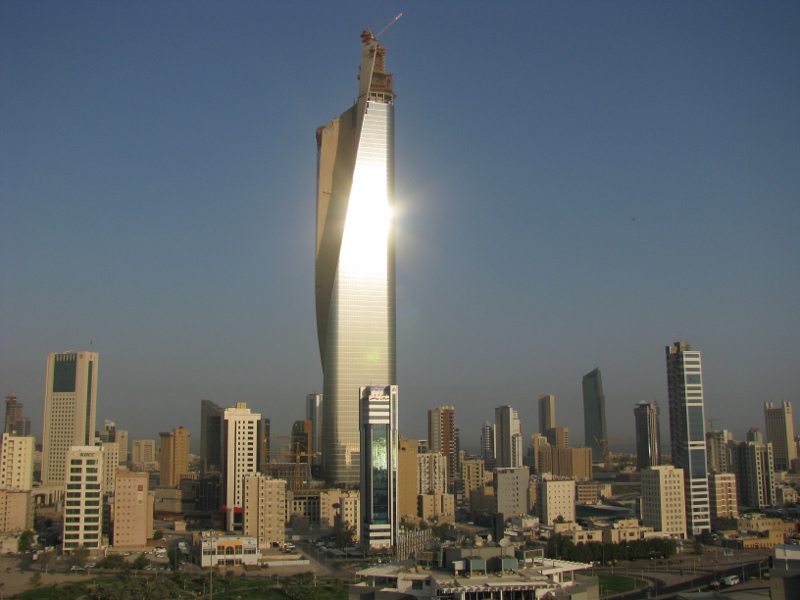 Kuwait city. (Source: Phil Magor)Fifteen months after the Arab Oil Congress, the executives of Esso (Exxon) met in New York to discuss the pressing issue of oil prices. Manore “Jack” Rathbone, the company’s new chairman, had climbed the ladder of the American oil industry but had little foreign experience. He simply wanted to make more money for his company and hated the idea of the Russians taking over the world market with their cheap oil. Ignoring what had happened the previous year, Rathbone wanted to cut the posted prices once again and unilaterally. There was opposition to his decision even from within Exxon, especially from Howard Page, the company’s best Middle Eastern expert. But it was futile. Initially, Exxon wanted to cut the oil prices both in Venezuela and in the Middle East but given its already bitter relations with Venezuela the company’s officer in Caracas threatened to resign, so Exxon decided to leave Venezuela out of its price reduction.
Kuwait city. (Source: Phil Magor)Fifteen months after the Arab Oil Congress, the executives of Esso (Exxon) met in New York to discuss the pressing issue of oil prices. Manore “Jack” Rathbone, the company’s new chairman, had climbed the ladder of the American oil industry but had little foreign experience. He simply wanted to make more money for his company and hated the idea of the Russians taking over the world market with their cheap oil. Ignoring what had happened the previous year, Rathbone wanted to cut the posted prices once again and unilaterally. There was opposition to his decision even from within Exxon, especially from Howard Page, the company’s best Middle Eastern expert. But it was futile. Initially, Exxon wanted to cut the oil prices both in Venezuela and in the Middle East but given its already bitter relations with Venezuela the company’s officer in Caracas threatened to resign, so Exxon decided to leave Venezuela out of its price reduction.
On 9 August 1960, Exxon announced reduction of 10-14 cents a barrel (up to 8%) in the posted prices of Middle Eastern crudes, leaving Saudi Arabian light at $1.80/b, the same price it had been in 1949. Given the interdependent bonding of the Seven Sisters, the other companies followed Exxon’s suit, but unwillingly and with a sense of alarm. As Howard Page predicted “all hell broke loose.” Within hours of the news, Alfonzo and Tariki telegraphed each other to organize a meeting. Even the pro-Western Shah of Iran, who wanted to distance his country from the 1959 Arab Congress, was furious. Five oil producing countries – Venezuela, Saudi Arabia, Iran, Iraq, and Kuwait – held an emergency meeting in Baghdad (hosted by Iraq’s President General Qasim) on 10-14 September 1960, and founded OPEC. An editorial in the Middle Eastern Economic Survey commented:
“It was quite clear from the start that the price cuts might precipitate the establishment of what some delegates chose to call a cartel to confront a cartel.”
In 1961, at a meeting in Caracas, OPEC adopted the text of its Statute.
The Rise of OPEC
OPEC began with a budget of £150,000, headquartered in Geneva. But as Switzerland was reluctant to provide diplomatic privileges to OPEC’s Secretariat, the organization moved to Austria in June 1965, where it still operates today. OPEC’s first secretary-general was Fouad Rouhani from Iran.
In OPEC’s early years, the Seven Sisters decided to ignore its existence and continued to deal with the oil producing countries individually. Nevertheless, the establishment of OPEC prevented further cuts in prices and made the unified voice of the oil producing countries heard by the companies. Over the years, especially in the 1970’s, OPEC members took ownership of their oil resources and adopted production quotas in order to influence oil prices in their favor.
However, oil production from other parts of the world, including the North Sea and Russia, as well as political differences within OPEC have significantly limited its power. And today, given the integrated world economy and the global flow of oil, no single country or company can control oil resources or prices.
OPEC currently has 12 members: Algeria, Angola, Ecuador, Iran, Iraq, Kuwait, Libya, Nigeria, Qatar, Saudi Arabia, the United Arab Emirates, and Venezuela. Gabon and Indonesia left OPEC in 1974 and 2008, respectively. OPEC views itself as an inter-governmental organization, formed to exercise the sovereignty of oil producing countries over their natural resources; it aims at stability of the global oil market both in terms of reasonable pricing and secure oil flow.
Whatever our view of OPEC, one thing is clear: it is a 50 year old organization, and will have a vital place in the world economy for years to come.





